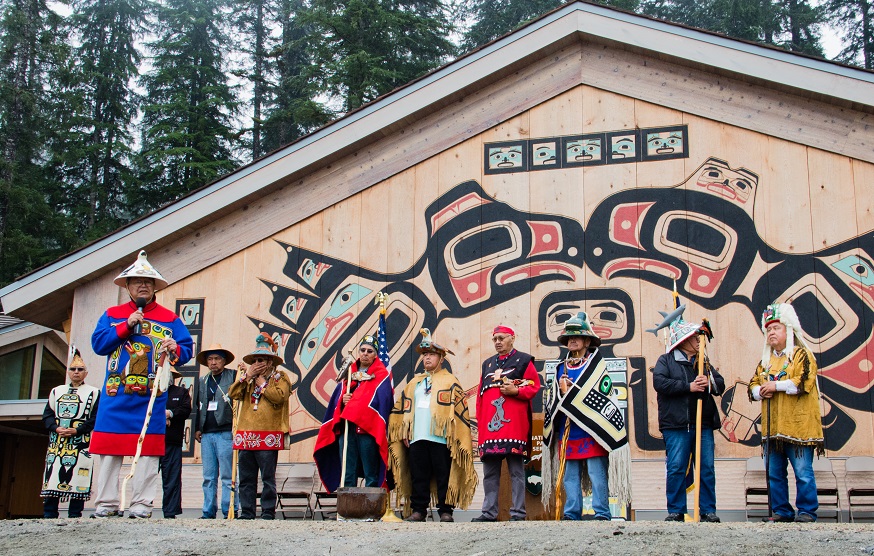News Release

NPS Photo
News Release Date: November 7, 2016
Contact: Beth Stern, National Park Service, 202-219-8933
Contact: Rachel Cromer Howard, AIANTA, 505-724-3578
National Parks and Tribes Collaborate to bring Cultural Experiences and Connections to Travelers
WASHINGTON – To commemorate Native American Heritage Month and the centennial of the National Park Service (NPS), the American Indian Alaska Native Tourism Association (AIANTA) and the NPS are encouraging travelers to celebrate American Indian culture throughout the country by visiting national parks with special connections to the Native Heritage in their respective locations.
Through collaborations between tribes and public lands, tourism can help Indian Country link its historical interpretations to landscape, showcasing that authentic tribal stories and perspectives are intertwined in the fabric of American history.
“At AIANTA, we help tribes to develop a tourism industry built on the belief that the true history of our peoples can only be told from our voices and perspectives,” said Aimee Awonohopay, AIANTA’s Public Lands Partnerships Program Manager. “What better way to celebrate Native American Heritage month than to visit and learn from tribes right in our own backyards?”
“The National Park Service has been working in recent years to incorporate more tribal voices and cultural interpretation into our visitor experiences at parks, and we are eager to encourage travelers to take the opportunity, especially this month, to visit and learn something new about the local culture in the parks,” said Donald Leadbetter, the National Park Service Tourism Program Manager.
In recent years, new efforts have been made in many parks to incorporate tribal voices into the visitor experience and cultural interpretation. During 2016, the centennial of the National Park Service, a number of park-tribal collaborations debuted, offering tribes new opportunities for cultural expression and giving park visitors new perspectives on history, community, and the land. Some cultural experiences at parks include:
- Twenty years of relationship building and collaboration between the Hoonah Indian Association and Glacier Bay National Park and Preserve was celebrated at the opening of the Huna Tlingit Tribal House (Xunaa Shuka Hit) on August 25, 2016. The Tribal House provides a venue for ceremonies, workshops, camps, and tribal meetings. Through mentoring, apprentice opportunities, and interpretive programming, the Huna Tlingit Tribal House ensures that Huna Tlingit culture, language, and history will be passed on to current and future generations.
- At the Desert View Area and Watchtower in Grand Canyon National Park, the expertise and voices of the park’s Inter-tribal Advisory Council and park staff along with support from the American Indian Alaska Native Tourism Association are launching a new vision and model for interpretation and tribal engagement. Park visitors can now engage with First Voice cultural demonstrators and interpreters while tribal youth can take part in internship and employment opportunities offered by the park. Over time, an inter-tribal heritage center will be developed where visitors can learn more about neighboring tribes and get information for visiting tribal reservations. This outstanding collaboration has been recognized as a 2016 NPS Director’s Partnership Award recipient.
- The Native American experience of Route 66 is highlighted in a new website and travel guide, created in partnership by AIANTA and NPS. While the guide includes native history and points of interest along the route, it also informs travelers about genuine cultural experiences available today. Compiled with assistance from many tribes along the route, “American Indians and Route 66” gives travelers a more complete picture of the famed journey.
- In Acadia National Park, weekly Cultural Connections presentations spotlight the heritage and history of the park and the region. This year, Hawk Henries, member of the Nipmuck tribe, brought a tribal voice to the series, featuring storytelling and musical performances on his hand-carved eastern woodland flutes.
For more information on tribal tourism, visit NativeAmerica.Travel
For more information about tribes and NPS, visit National Park Service Tribes and Tribal Heritage Grants.
Native One Stop provides information about resources available from the U.S. Government.
About AIANTA:
The American Indian Alaska Native Tourism Association (AIANTA) is a 501(c)(3) national nonprofit association of American Indian tribes, tribal tourism, cultural and private sector representatives, representatives from the tourism industry, Federal, State and local governments, colleges and universities, and friends that was incorporated in 2002 to advance Indian Country tourism. The association is made up of representatives from six regions: Alaska, Eastern, Midwest, Pacific, Plains and the Southwest. AIANTA’s mission is to define, introduce, grow and sustain American Indian, Alaska Native and Native Hawaiian tourism that honors traditions and values.
About NPS:
More than 20,000 National Park Service employees care for America's 413 national parks and work with communities across the nation to help preserve local history and create close-to-home recreational opportunities. Visit us at www.nps.gov, on Facebook www.facebook.com/nationalparkservice, Twitter www.twitter.com/natlparkservice, and YouTube www.youtube.com/nationalparkservice.
Last updated: November 7, 2016
